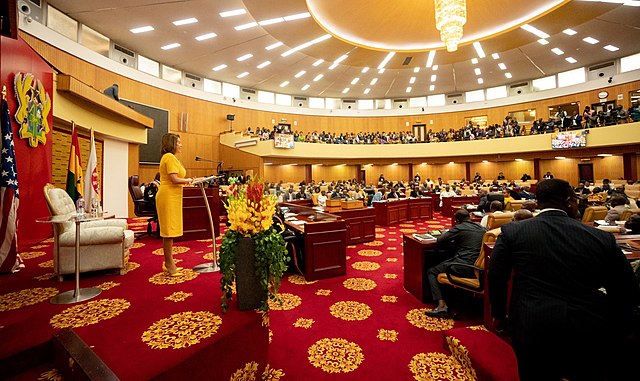Over the last decade, student debt in the United States has exploded, and students are finding themselves at the forefront of a debilitating financial crisis.

Here are the facts: In 2000, national student debt totaled about $200 billion. Only 10 years later that number had grown to over one trillion dollars — exceeding that of national credit card debt. An NPR article on college student debt says the average college student attending a public university is estimated to have $27,000 of debt upon graduation. If you include parents’ debt, that figure rises to $34,000, often more than the debt of a graduate from a private college. Student debt is no longer the singular issue of individuals borrowing money to finance their education; at one trillion dollars, student debt represents a major component of the U.S. economy, and can no longer be ignored.
In the past, student debt was considered to be “good debt” because it allowed individuals to finance their college education, affording them the necessary credentials to, in theory, become gainfully employed. In a healthy economy with low unemployment rates, this scenario was often true. However, the current situation is different.
In an economy with the unemployment rate hovering around 9 percent, about two times higher than what it was four years ago, many students are finding it impossible to find jobs upon graduation. Even among those graduates who are employed, many are underemployed, and therefore their student debt remains, all the while accruing interest, which can total in the thousands. In addition, a bachelor’s degree is often inadequate, and students have to attend graduate school, further increasing their debt-load.
To draw a clearer picture of the crisis that students are now involved with, we should look to history.
In 1978, only 33 years ago, students working 10 hours a week for minimum wage were able to attend school full-time and graduate with zero debt, according to a Public Higher Education Network of Massachusetts March 2011 memo. (PHENOM March 2011 Memo “Key Data about Massachusetts Public Higher Education” [pdf])Today, students would have to work a staggering 50 hours a week to do the same.
In 1978, in-state undergraduate students at the University of Massachusetts paid a total of $767 in tuition and fees, whereas in-state students now pay almost $13,000, a figure that excludes miscellaneous costs such as books. According to a Norton Sociological study, students who graduated in 2008 owed, on average, $23,200 upon graduation – a 24 percent increase since 2004 – and one in 10 students owed more than $40,000.
Of the 67 percent of students who graduated with debt (about 1.4 million students), 62 percent attended public institutions, according to the study.
Students spend roughly 30 percent of their monthly income on student loan repayment, the study states, and over the course of 10 years, can pay thousands of dollars in interest. ()And that’s just the average. Many students owe much more than that, with debt reaching $100,000 or more. On top of it all, student debt is practically impossible to get rid of, and cannot be discharged through declaring bankruptcy.
This debt has very real consequences for graduates, and is considered a form of modern debt bondage. Many graduates find themselves unable to finance a mortgage, pursue the careers they wish, and this debt has been shown to have a significant effect on relationship and childbearing opportunities, as well.
In Massachusetts, funding has been cut by $42.6 million dollars for community colleges, $35.4 million dollars for state universities, and $86.2 million dollars for UMass campuses; a total of $164 million dollars in the past three years alone.
Only 3.8 percent of Massachusetts’s revenues go to public higher education, compared to the national average of 6.6 percent. In fact, Massachusetts consistently ranks below national average when it comes to funding for public higher education, and the average cost of tuition fees at a public four-year university in this state is 30 percent above the national average. Although there has been an increase in enrollment of college students, students are finding themselves, increasingly, unable to front the cost.
Recently, student activists in the Occupy Wall Street movement have addressed the growing issue of student debt. Through direct action that emulates the type of activism witnessed in the 1970s during the anti-war movement, students are hitting the streets and demanding that their grievances be heard. And it isn’t just happening on Wall Street.
Last year, 60 students from UMass went to the State House in Boston and lobbied their state representatives for more funding for public higher education. The result of their efforts was an addition of $1.1 million dollars to the financial aid line item of the state budget. Students have seen real results as a result of their activist efforts.
There are several ways students can get involved on campus this semester. On Oct. 21 and Oct. 22, UMass Student Action and CEPA will be hosting “Our Write to Freedom” in the Campus Center Concourse where students will be provided with the materials to write to state representatives about issues that are affecting students.
Jennifer Moore is an intern at the Center for Education Policy and Advocacy, an arm of the Student Government Association at UMass. She can be reached at [email protected]. Cristoph Demers can be reached at [email protected].












![By freestocks.org [Creative Commons Zero], via Wikimedia Commons](https://dailycollegian.com/wp-content/uploads/2024/04/Picture1-1.png)
jim morgan • Oct 21, 2011 at 11:09 am
College campus’-both private and public–is where today’s protests should be staged. Tuition/room&board increases have FAR surpassed the rate of inflation since the mid 90’s.
David Hunt '90 • Oct 21, 2011 at 6:52 am
Does it not occur to you that the flow of federal $$ into the education system is what helps create the inflated prices in the first place?
Mike L. • Oct 21, 2011 at 2:23 am
College is a choice. Your major is your choice. Remember that when you graduate with your liberal arts degree and 40k in debt.